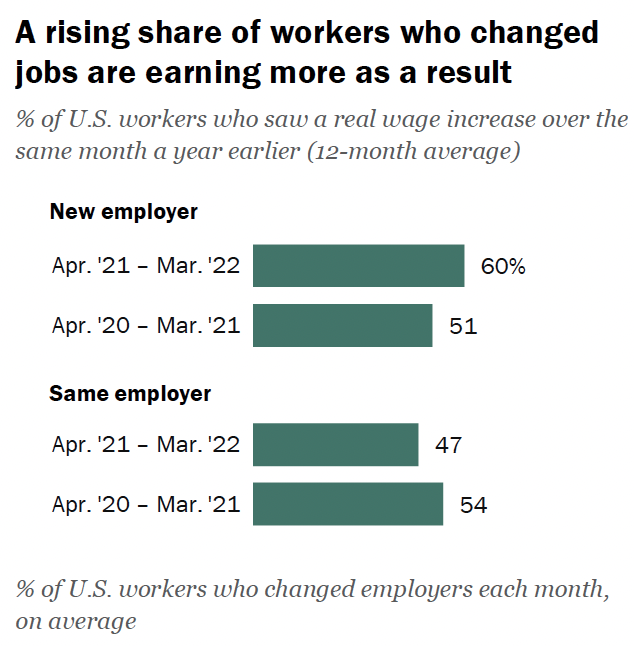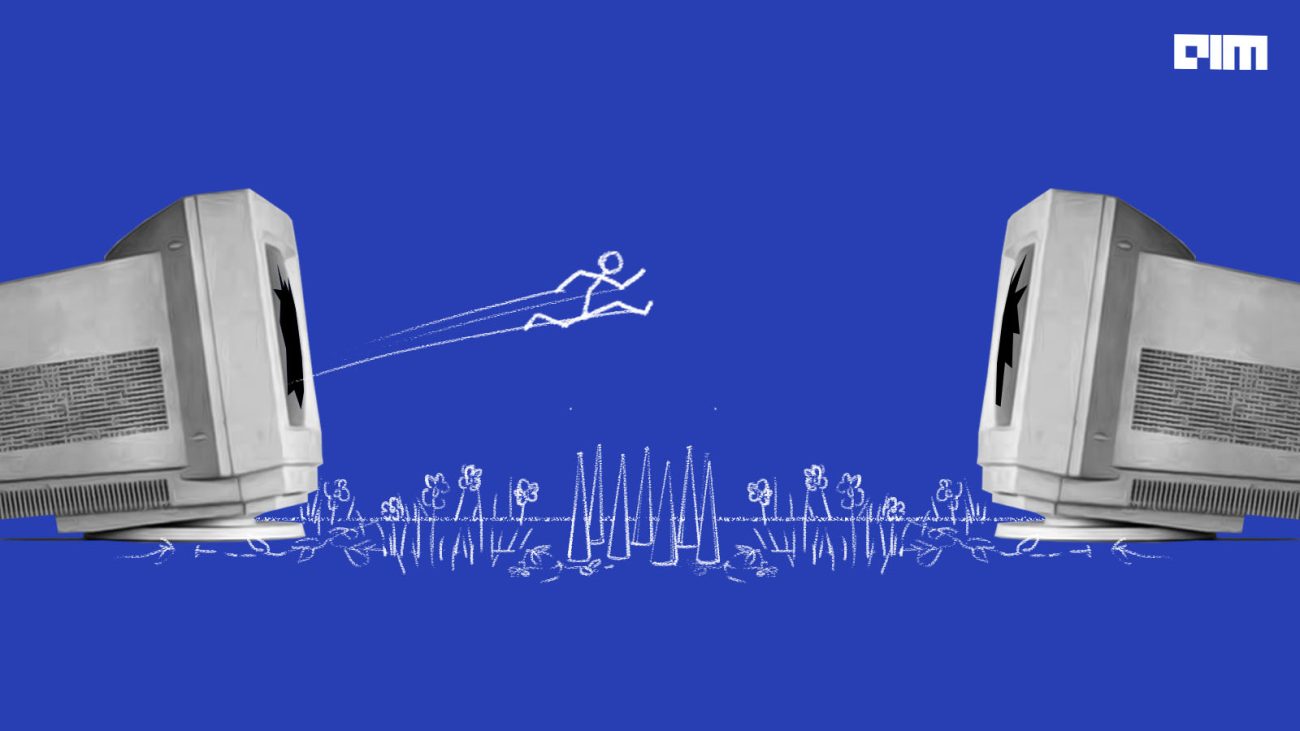|
Listen to this story
|
“Your job is not your job, your job is to get a better job,” a LinkedIn influencer’s post announces gloriously on the professional networking platform.
Register today for oneAPI DevSummit >>
Gone are the days when employees stuck around at the same job picking security over unfamiliarity. In the past few decades, employees have become increasingly slick at switching jobs as soon as “a better opportunity” (read: better pay, position or process) presents itself.
According to a report published by the Pew Research Centre towards the end of July, over 60% of workers reported an increase in wages after switching jobs in the period between April 2021 and March 2022. This is 9% higher than the data from the same period last year. Compared to this, only 46% of employees who stayed in the same job saw their wages rise.

Reshuffling, not quitting
The report shows that 2.5 per cent of the total workforce or around 4 million employees have moved to a new job every month between January and March 2022, up from the 2.3 percent employees in 2021. Interestingly, a survey published by Pew Research in March this year also found that a majority of workers who quit their job last year cited low pay (63%), fewer opportunities for career progression (63%) and feeling disrespected at work (57%) as the main reasons for leaving.
Job data from the end of the first-half of the year concludes that there is a shift in the phenomenon – the Great Resignation has gradually transformed into the Great ReShuffle. It wasn’t that people who resigned from their jobs had quit the labour force entirely, hence it’s more like an intra-industry reshuffle. On the contrary, 53% of the employees who quit last year had joined entirely new professions.
Mirror effect
The Indian economy appears to be on the same trajectory as the US. According to a LinkedIn survey, around 82% of the country’s workforce intends to switch jobs by the end of 2022. Of these, 94% of the job seekers are freshers and 87% are Gen Z professionals. The results were reiterated in a research by Qualtrics, an experience management firm, which stated that only 62% of Indian employees wanted to stay with their current employer for the remaining part of the year.
Work from home or office?
For Indian companies, the ability to retain employees has become a tight ropewalk between transforming their working models and adopting a hybrid working model successfully. This has become a crucial point of contention especially in the tech sector. Around 60 percent of the respondents in the Qualtrics survey said that they would look for a new job, if forced to return to work-from-office full time, as compared to the global average of 35 percent.
“To effectively compete in the race for talent and successfully navigate challenges caused by the shift to hybrid, businesses across India must continue to adopt new mindsets, and define and iterate their ways of working. As seen in the Qualtrics research, addressing the challenges faced are not as simple as setting new work schedules or boosting engagement. People are making career decisions based on multiple factors, meaning the ability to quickly and easily identify and respond to the issues having the biggest impact is a significant advantage,” says Lauren Huntington, employee experience solutions strategist for Qualtrics in India.
A Nasscom report published in collaboration with Boston Consulting Group or BCG titled, ‘Shaping the Future of Work in India’s Tech Industry’ revealed that more than 80 percent of Indian IT companies and Global Capability Centers or GCCs are willing to adopt hybrid working practices, far more than other industries. Predictably, younger techies are more unwilling to return to office forcing IT services providers like Happiest Minds Technologies and analytics firms like Latent View Limited to continue with hybrid working models.

Stability vs. stagnancy
Software professionals have always considered staying beyond a couple of years in the same job as a sign of stagnancy. Online discussions between IT employees showed that conventional wisdom among software engineers was to switch jobs after two years. In the industry, two years is the maximum time period required for a techie to excel at a specific tech stack or fully understand the requirements of a role. The ever-changing nature of the tech industry pushes professionals in the field to continue learning new programming languages and other skills.

Employees who had spent years in the sector rued not switching their jobs enough. This attitude of the IT workforce has been a big factor behind the high attrition rates in the sector. IT companies were forced to tackle this issue with more stringent changes in policy like extended three-month notice period in some cases. The longer notice period, however, ended up frustrating their employees even more.

























